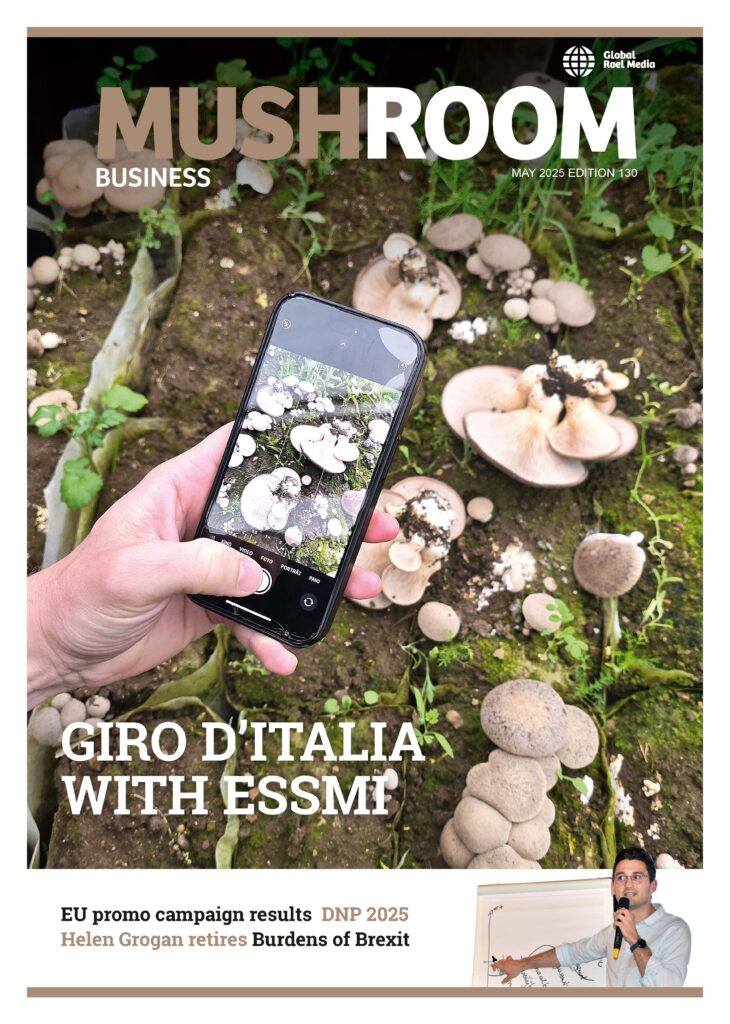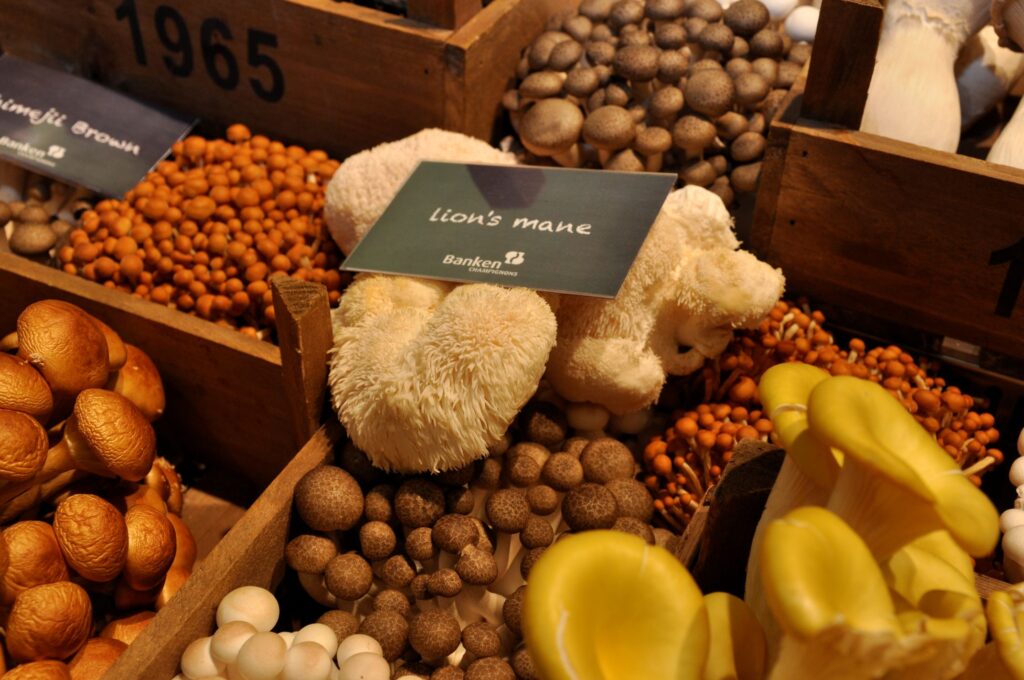Plaster mould is often found when cultivating on blocks of compost Inoculated compost seems to be very susceptible to this problem. If there is just a minor outbreak, the growing mycelium will supplant the plaster mould and there shouldn’t be any negative effects. In the event of heavy infection – the compost is usually of clearly inferior quality – the plaster mould spreads and takes it toll on the mushroom yield. Combating this problem during cultivation is not possible.
Both brown and white plaster mould occurs. These are however generic names for various types of moulds. They all have one thing in common they can grow on casing soil but the cause must be sought in the compost.
Greasy sticky compact compost resulting from using bad horse manure over fermentation, too much water and too little gypsum, is often the cause behind plaster moulds. In the anaerobic compact patches bad nutrient conversion takes place and the pH remains too high. Other causes may be badly mixed compost and lumps of chicken manure Too low temperatures during pasteurisation or patches of condensation in the tunnel also often lead to plaster moulds.
Con Hermans, AdVisie ‘The mushroom cultivation advisors’
hermans@mushroomconsulting.nl






